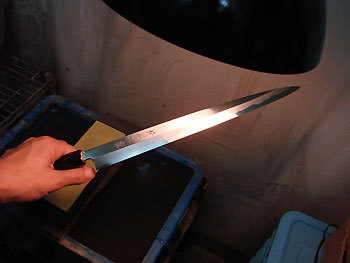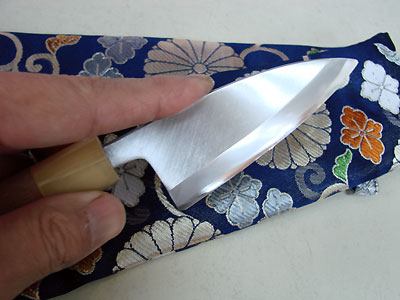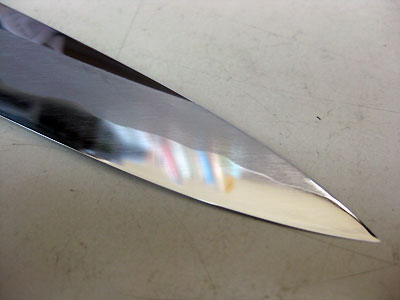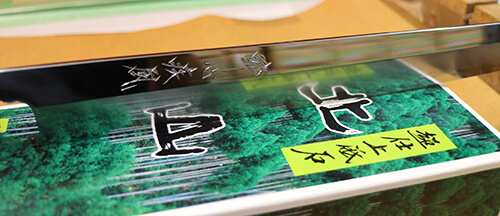Stainless Steel Petty Deba Knife
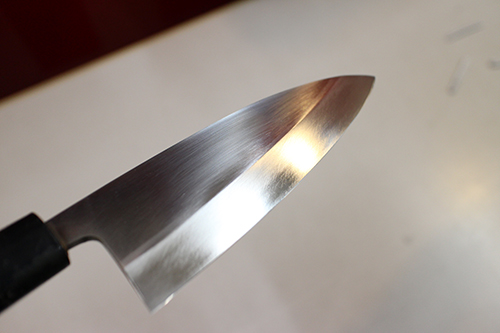
Today, I repaired the Stainless Steel Petty Deba Knife.
This type of knife is characterized by the difficulty in achieving a sharp edge.
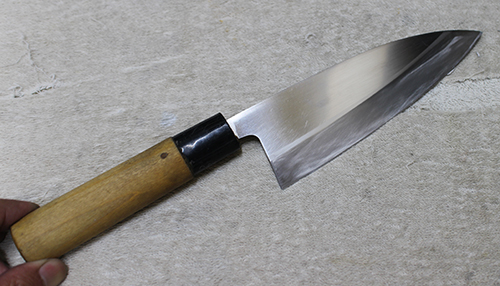
I received a request to make this knife cut properly, as it currently struggles to do so. It’s a basic sharpening request, you see. There are visible traces of your dedicated efforts in sharpening it yourself. I could tell you put in the hard work to widen the edge.
But here’s the twist – the harder you push, the less it seems to cut, especially with this type of knife. Sometimes, a rough and casual sharpening technique works wonders. Widening the edge equals improved clearance and better knife entry, but it also means a sharper edge angle. Yes, sharper angles can make it cut better, but the steel may not withstand such angles.
The consequence? The edge might remain intact, but the blade’s tip could end up bending. This steel’s tempering limits and the balance between hardness and workability during manufacturing can sometimes lead to challenges in achieving a keen edge – it’s a delicate balance.
However, when you first bought it, I’m sure it was sharp. That’s because this steel can handle a steeper angle, incorporating a stronger thread-like edge (Hamaguri edge). If you understand and work with this angle, you’ll still have a pretty decent knife to work with – probably, at least (laughs).
Take a look at traditional Japanese knives sold at places like hardware stores. You’ll find those priced around 3000 to 5000 yen. Notice how they all feature a thread-like edge at the tip? That angle is the sweet spot where the knife remains stable while cutting.
Now, back to this knife – as part of reshaping, I slightly narrowed the edge.
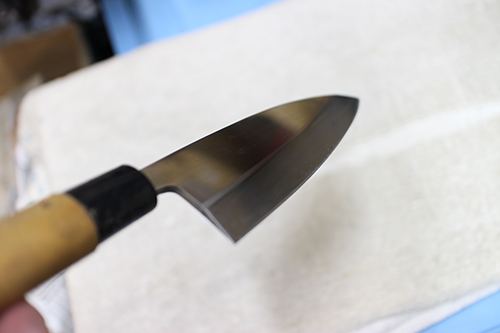
It feels like I’ve put in a strong Itohiki this time. From here, I’ll sharpen and refine the cutting edge… and give it that finishing touch.

Being a full stainless steel knife, there’s no need for elaborate decorative finishing. I simply gave it a light pass with the Oomura natural sharpening stone. Afterward, I moved on to Uraoshi blade honing.
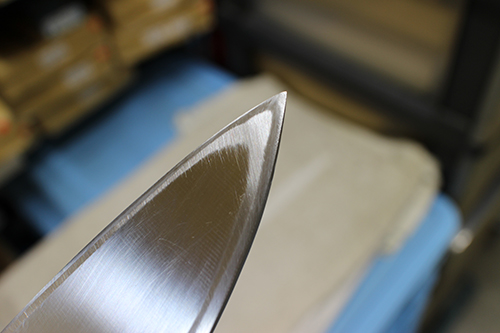
It seems the customer attempted Uraoshi with a warped sharpening stone. As a result, both the ridge side and the edge side are not making contact with the stone! When I tried Uraoshi with a diamond sharpening stone, only the inner side made contact…
I considered giving up on honing the back edge, but I decided to proceed with Uraoshi as far as possible.
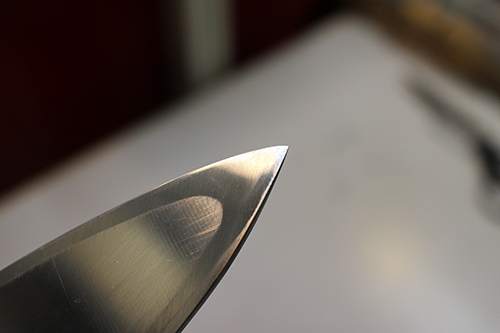
Even though it hasn’t reached the outer perimeter yet… I decided to stop here as pushing further might flatten the back. I assume that when the customer sharpens with their own stone, it will likely reach the outer edge.
*This is because the customer’s stone may not have the same level of flatness as a diamond stone.
Afterward, I lightly performed Itohiki and Uraoshi using the super ceramic finishing stone #3000, and we’re all done. The Stainless Steel Petty Deba Knife is now sharp and ready to slice. As for the edge’s durability, while I’ve earned some sharpness through Itohiki, the true story lies within the steel itself…
I’ve written quite a bit, but I believe this knife falls into the category of ‘It’ll cut for now’ if you sharpen it with a #1000 medium grit stone. If you’re aiming for even sharper and longer-lasting cutting performance, it might be best to invest in a higher quality knife.
Or, you can go the route of honing skills to achieve that sharpness or developing cutting techniques to make it last longer! That’s what I think, at least.
hibishugyo
- 2015-10-07
